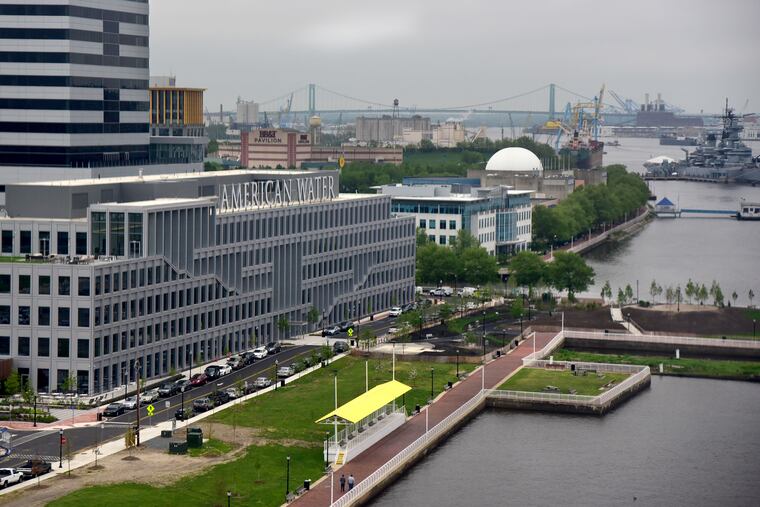Report: The only thing rising in Camden is budget deficits | Editorial
Boosters say Camden is rising. That's arguable. But what's inarguable is that the city's budget deficits are on the rise.

Boosters continue to insist that their strenuously upbeat ‘Camden Rising’ narrative is alive and well — even amid the troubling questions about the $1.6 billion in state tax breaks that were supposed to uplift the city of 75,000 after decades of disinvestment and decline.
As The Inquirer’s Catherine Dunn and Andrew Seidman report, the latest analysis by the New Jersey Division of Local Government Services is projecting that Camden’s chronic budget deficits will swell from $8.2 million in fiscal year 2020 to $52.2 million in fiscal 2024. In other words, the city — broken and essentially broke for half a century — is expected to remain dependent on the state for years to come. Those impressive neon-accented corporate headquarters and other publicly subsidized projects downtown and on the waterfront will be of little direct help, at least in the near future.
So much for corporate welfare as an urban revitalization tool. How many more times must this trickle-down fantasy be disproved before big companies promising to “create jobs” stop coming to city halls or statehouses with their hands out and leaving with their hands full of public dollars?
Let’s be clear: The state’s “Status of Camden Finances” analysis did not focus primarily on the controversial tax incentives the state Economic Development Authority (EDA) provided to dozens of companies willing to locate or expand in Camden. The analysis does not pin the blame for the projected deficits on the incentives, but it does note that a subset of EDA projects so far collectively assessed at $155 million, including the 76ers facility, Subaru corporate complex, and American Water headquarters, also have qualified for 10-year-long exemptions from city, county, and school district property taxes.
Sweet deals like these contribute to Camden’s long-standing inability to raise enough revenue to pay for municipal operations. The depressed value of its residential and commercial real estate is another factor, and the analysis also notes that 60 percent of all property in the city — including many prime pieces of its waterfront — is tax-exempt.
Most cities can rely on downtown real estate revenue, but not Camden, where much of the city’s heart was torn down for preposterous urban renewal schemes in the 1960s and ’70s, and where vacant land, parking lots, tax-exempt eds-and-meds facilities, and redevelopment projects with PILOT (payment in lieu of taxes) agreements dominate and deaden the landscape.
Meanwhile, after a quarter century of special audits, enhanced state oversight, and an outright state takeover of city government from 2002 to 2010, Camden, the analysis found, “is incapable of reconciling its books [and] cannot … ascertain how much money is available to pay its bills.” These and other jaw-dropping deficiencies surely have not been a secret. Yet the unholy alliance of Republican Governor Chris Christie and Democratic boss George E. Norcross III unleashed a gargantuan "incentives” program that would have overwhelmed any local government.
This is the same sort of grandiose, top-down approach that left the city with a torn-down downtown where there’s almost no conventional commerce unless one counts lucrative development opportunities for the well-connected. Press releases may proclaim “Camden Rising.” A better descriptor might be “Camden Writhing.”